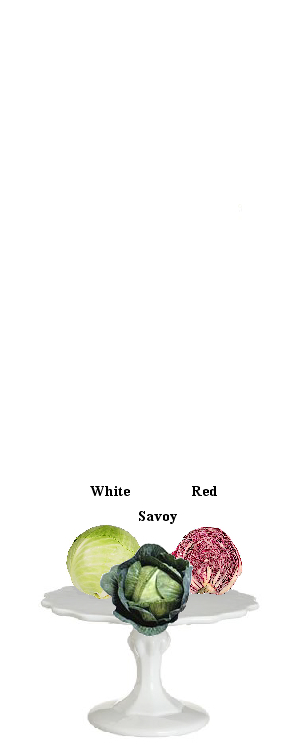That stinky smell
Some people are reluctant to cook cabbage at home. That's because, if left on the stove too long, cabbage can produce a strong stinky smell, one that almost no one likes. Because of that smell, some people also think that eating cabbage causes our bodies to produce a thing that, in more polite circles, is sometimes called "wind."
But that's not true. Beans produce "wind;" but cabbage does not. That ickky smell when cabbage cooks too long is sulfur. It's the same sulfur that gives onions their frisky taste when eaten raw. Cooking releases the sulphur out into the air. The best way to keep that from happening is to cook your cabbage for a shorter period of time. Cook it just for 3 to 4 minutes instead of 7 to 8. It's that simple. Or don't cook it. Cabbage that's stir-fried instead of boiled can be a delight. Or you could just get used to smell and ignore it. It's not harmful; and it does go away.
Three popular types
The three types of cabbage grown most often in home gardens in the United States are the White, the Red, and Savoy.
The white and red cabbages have more leathery outer leaves and tighter, smooth, ribbed heads. Both have a fresh, slightly spicy, pungent flavor. The main difference between them is simply their color. The Savoy cabbage has looser, heavily crinkled leaves and is milder than the other two in flavor.



